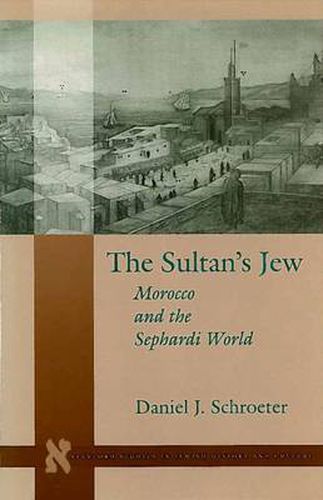Readings Newsletter
Become a Readings Member to make your shopping experience even easier.
Sign in or sign up for free!
You’re not far away from qualifying for FREE standard shipping within Australia
You’ve qualified for FREE standard shipping within Australia
The cart is loading…






This study uses the extraordinary life of Meir Macnin, a prosperous Jewish merchant, as a lens for examining the Jewish community of Morocco and its relationship to the Sephardi world in the late-18th and early-19th centuries. Macnin, a member of one of the most prominent Jewish families in Marrakesh, became the most important merchant for the sultans who ruled Morocco, and was their chief intermediary between Morocco and Europe. He lived in London for about 20 years, and then shuttled between Morocco and England for 15 years until his death in 1835. This volume challenges accepted views of Muslim-Jewish relations by emphasizing the ambivalence in the relationship. It shows how elite Jews manoeuvred themselves into important positions in the Moroccan state by linking themselves to politically powerful Muslims and by establishing key positions in networks of trade. The elite Jews of Morocco were also part of a wider Sephardi world that transcended national boundaries. However, Macnin remained more connected to Morocco, where Jews were, according to Islamic law, proteges of the ruler and still subject to specific legal disabilities. The early-19th century sultan Mawlay Sulayman confined Jews in a number of Moroccan cities to newly created Jewish quarters as part of a policy of defining boundaries between Muslims and Jews. Yet Macnin remained closely tied to royal power, and in 1822 he became the principal intermediary between Morocco and the European powers for Mawlay Sulayman’s successor, Mawlay ‘Abd al-Rahman. At the beginning of the period covered by this book, Meir Macnin belonged to a wide, transnational Sephardi world, and moved easily between Morocco and Europe. By the end of his life, however, this Sephardi diaspora had virtually come to an end. Emancipation in Western Europe and the growing identification of European Jews with the nations in which they lived meant that their affinity to their Sephardi heritage no longer transcended their national attachments. The gap between Moroccan and European Jewry grew, and a new kind of division - between Western and Oriental Jews - now existed within the Jewish world.
$9.00 standard shipping within Australia
FREE standard shipping within Australia for orders over $100.00
Express & International shipping calculated at checkout
This study uses the extraordinary life of Meir Macnin, a prosperous Jewish merchant, as a lens for examining the Jewish community of Morocco and its relationship to the Sephardi world in the late-18th and early-19th centuries. Macnin, a member of one of the most prominent Jewish families in Marrakesh, became the most important merchant for the sultans who ruled Morocco, and was their chief intermediary between Morocco and Europe. He lived in London for about 20 years, and then shuttled between Morocco and England for 15 years until his death in 1835. This volume challenges accepted views of Muslim-Jewish relations by emphasizing the ambivalence in the relationship. It shows how elite Jews manoeuvred themselves into important positions in the Moroccan state by linking themselves to politically powerful Muslims and by establishing key positions in networks of trade. The elite Jews of Morocco were also part of a wider Sephardi world that transcended national boundaries. However, Macnin remained more connected to Morocco, where Jews were, according to Islamic law, proteges of the ruler and still subject to specific legal disabilities. The early-19th century sultan Mawlay Sulayman confined Jews in a number of Moroccan cities to newly created Jewish quarters as part of a policy of defining boundaries between Muslims and Jews. Yet Macnin remained closely tied to royal power, and in 1822 he became the principal intermediary between Morocco and the European powers for Mawlay Sulayman’s successor, Mawlay ‘Abd al-Rahman. At the beginning of the period covered by this book, Meir Macnin belonged to a wide, transnational Sephardi world, and moved easily between Morocco and Europe. By the end of his life, however, this Sephardi diaspora had virtually come to an end. Emancipation in Western Europe and the growing identification of European Jews with the nations in which they lived meant that their affinity to their Sephardi heritage no longer transcended their national attachments. The gap between Moroccan and European Jewry grew, and a new kind of division - between Western and Oriental Jews - now existed within the Jewish world.